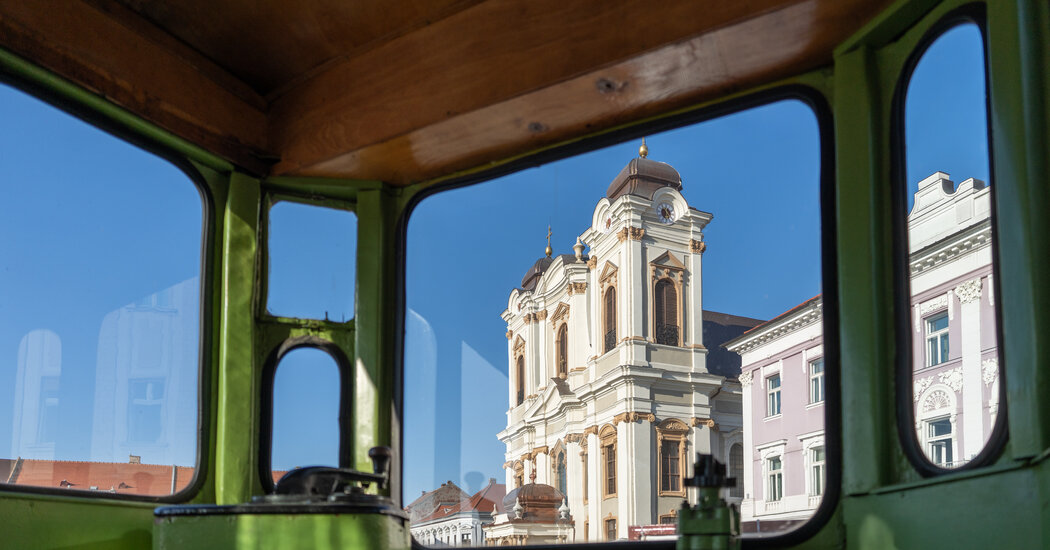Families stroll and savor gelato cones as bike couriers whiz by. Pensioners relax on benches near manicured flower beds while earbud-wearing hipsters walk dogs and children chase pigeons by a fountain laden with bronze fish. The scene in Victory Square in Timisoara, Romania, is quintessentially European — modern meets Old World.
Scanning the imposing Art Nouveau palaces lining the grand plaza — larger than three American football fields and bookended by the National Opera House and Metropolitan Orthodox Cathedral — I wonder how Timisoara remains a travel sleeper, the most noteworthy city you’ve probably never heard of.
Romanians and history buffs know Timisoara for its leading role in the bloody Romanian revolution in December 1989, when local protests set off a nationwide wave that toppled dictator Nicolae Ceausescu. (The country is still struggling with the unresolved legacy of that revolution.) As I gaze at vibrant Victory Square, it’s hard to envision 100,000anti-Communist protesters crammed together during those fateful days.
Other claims to fame include being the first city in Europe — second worldwide after New York — with electric street lighting (1884) and being called Little Vienna for its abundant Secession and Baroque architecture, an indelible mark of Hapsburg rule, which began in 1716 after 164 years under the Ottoman Empire. Liberated from the Turks, Timisoara flourished in the ensuing two centuries under Hungarian and Austrian control and the dual-monarchy Austro-Hungarian Empire. The Vienna moniker is a stretch, although the architecture, trams and green spaces do evoke the Austrian capital.
Timisoara is largely unknown to tourists — and relatively undiscovered — despite being just a few hours from Budapest. As close to Vienna as to the Romanian capital, Bucharest (both about 340 miles), and even closer to five other European capitals, Timisoara is also accessible by a small but expanding airport that connects it to cities across Europe.
I’d never heard of Timisoara either when I arrived in 2002 as a wide-eyed Peace Corps volunteer. I stayed two years, fell in love, returned to get married and made annual trips from America, when Timisoara tugged at me like an old friend. My wife and I moved back six years ago. I’ve witnessed an evolution from the glum post-revolution years to today’s cosmopolitan vibe, thanks to a booming tech sector, significant foreign investment and youthful energy from 40,000 university…
Click Here to Read the Full Original Article at NYT > Travel…
